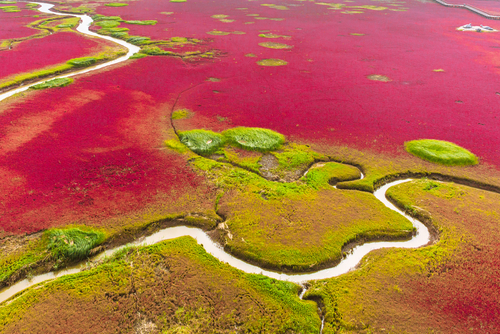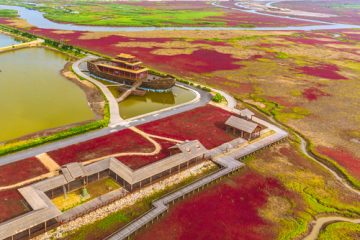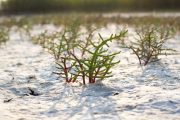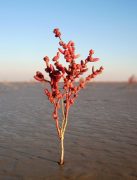
Scientific Wonders of the World: Panjin Red Beach in China
You may have heard of a black beach, but have you ever heard of a red beach? On this scientific expedition, we’ll show you the biological science behind the Panjin Red Beach in China. Let’s go exploring!

Panjin Red Beach
In northeast China, you can feast your eyes on one of the most beautiful beaches in the world!
It’s called Panjin Red Beach or Red Delta, and it is covered in a special kind of seaweed called Suaeda salsa. Amazingly, the seaweed turns a deep magenta in the fall. Only a small section of the beach opens to tourists, but it’s enough that you can see lots of beautiful deep red beach.
Interestingly, the seaweed changes colors all year. It starts out pink in the spring, then the colors become orange and finally deeper and more vivid red as the seasons change.
The Red Beach is an ecosystem, which means that the lifeforms in the area depend on each other. This includes the red seaweed Sueada salsa, other plant life, and even the air, water and soil.
Halophytes and Salinity
The seaweed Sueada salsa is called a halophyte, which is a plant that grows in a high-salinity (which means very salty) environment.
Many types of sea grass are also halophytes. If you see a plant growing near the beach, chances are good that it’s a halophyte!

Halophytes are interesting to scientists who study alternative fuel like biodiesel. Most edible crops don’t grow in salty soil, however halophytes do grow in these harsh environments. Importantly, growing halophytes doesn’t take up land that we need to grow food.
With this in mind, scientists see halophytes as a great potential source for fuel. Who knows, some day you might be putting seaweed fuel into your car!
